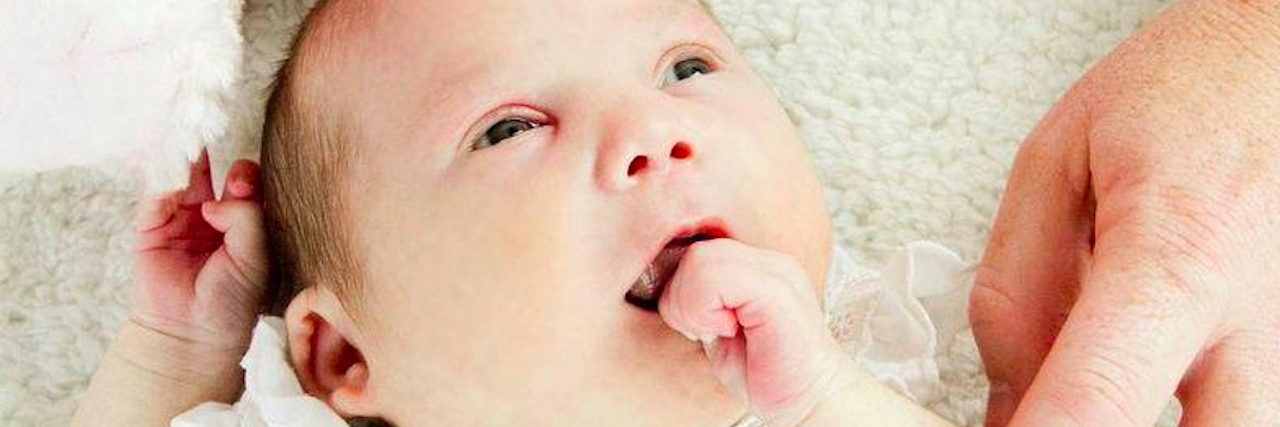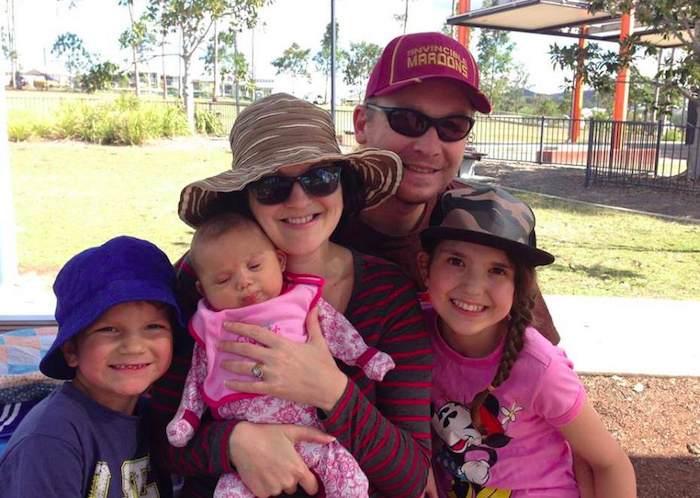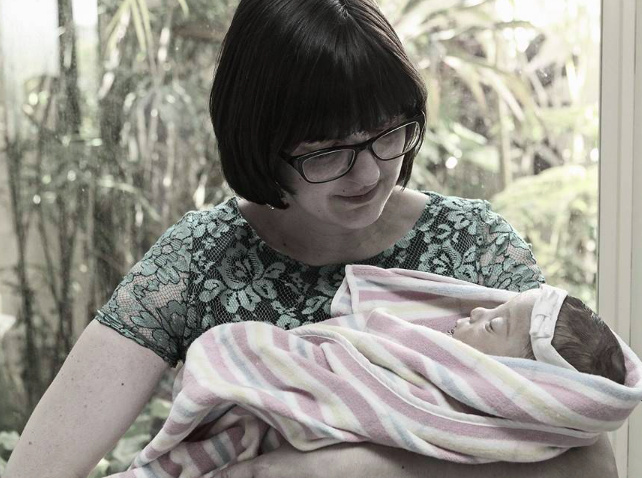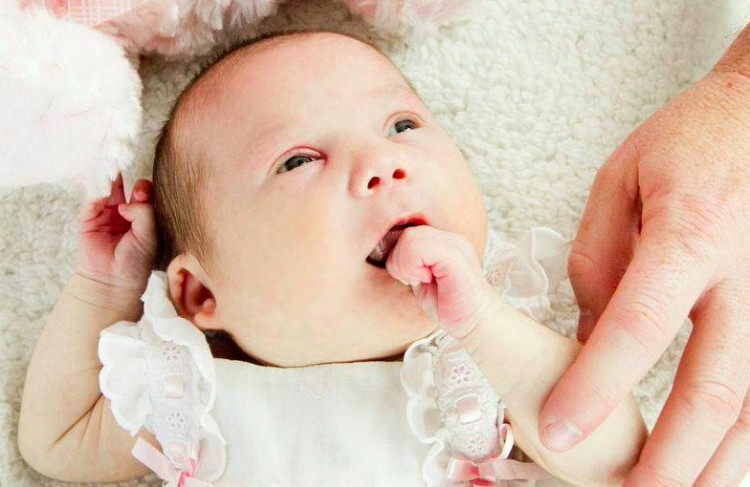The Most Heartbreaking Decision a Parent Could Make
On November 5, 2013, one little embryo was transferred via IVF to Heather Bramham. It was a success, and Asha was born. Abby and Alex were the proudest siblings a little girl could have.
But on November 5, 2014, a year to the day she was placed in her mother’s womb, Asha Bramham grew her angel wings while in her parents’ arms at Royal Children’s Hospital in Brisbane. She was 20 weeks old.
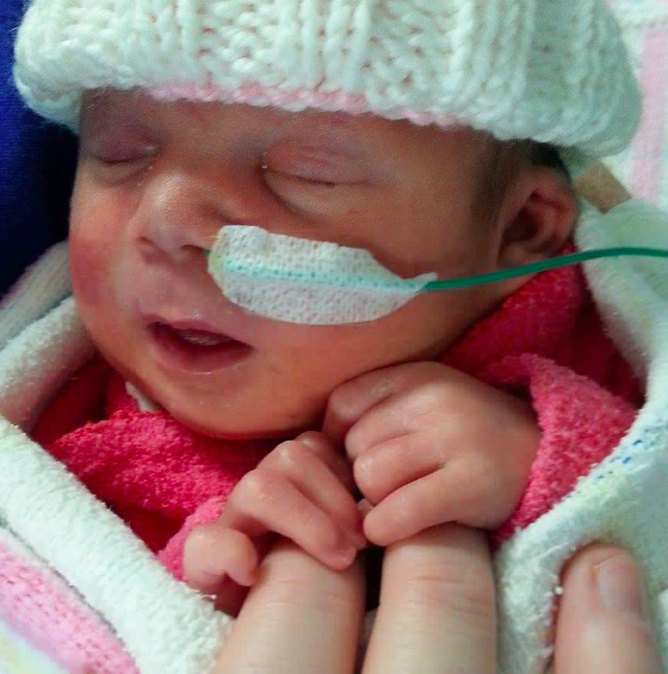
This is a story of biliary atresia, and the impact on one family. Biliary atresia is congenital (present before birth) and affects one out of every 15,000 to 20,000 infants across the world every year. It’s a life-threatening condition in infants, where the bile ducts inside or outside of the liver become blocked, trapping bile in the liver.
As well as biliary atresia, Asha had other contributing factors to her health issues. An additional 21st chromosome attached to one in five of her cells (Mosaic Trisomy 21), partial situs inversus (some organs not on the sides they typically present on), and a congenital heart condition.
Liver disease has a devastating affect on a child and the family, and early intervention is crucial. Some symptoms are pale stools, jaundice and enlarged liver. There is no cure for biliary atresia, but there is an operation called the Kasai procedure. For optimal outcomes (an 80 percent partial or complete success rate), the Kasai procedure needs to take place in the first three months of the baby’s life; a liver transplant is also an option. Asha’s liver issues were identified late, and the Kasai procedure was performed at 100 days old. In just 100 days, Asha already had fibrosis of the liver.
The Bramhams’ last day together as a family outside of hospital was September 23, the week before her Kasai procedure.
This hospitalization would be Asha’s last.
Rob says, “We knew we had a special little girl on board and we wanted a special name to suit her. We chose Asha Haylyn. Asha means ‘wish, hope and life’ and Haylyn means ‘unique.’ It suited her to a tee. We just didn’t know exactly how unique she was at that time.”
The weeks wore on, as the Bramhams juggled the responsibilities of working and two children at home. Life did not stop moving, even with a baby critically ill in hospital. While the Kasai procedure she had initially had surgery for was successful, she had picked up hospital infections, which put her on life support. One day in November, three weeks into life support and six weeks after she arrived in the ICU unit of The Royal Childrens Hospital, they had a meeting with their medical team.
Heather says, “We were told that we may have to make a decision to let her go in a few days, as treatment wasn’t working. That evening, Rob and I went down the road to get dinner. We came back to find that she had rapidly declined since we left, really struggling to breathe and gasping. Her carbon dioxide levels were back up to 200. Her body was in shutdown mode due to the septicemia.
“We made the heartbreaking decision to intervene and cease further medical treatment. For the first time in three weeks, we were able to cuddle her briefly, prior to the doctors removing her life support. She passed away peacefully in our arms. Our little girl was too unique — even for the doctors.”
More recently Heather wrote:
“It’s been an emotional, exhausting and extremely long 20 weeks since we said our goodbyes to this beautiful little girl of ours when she was a mere 20 weeks old.
“In Asha’s last few weeks, her hair had started to thicken up. I often wonder how it would be now, how thick it would be, how long it would be, if it would still be straight or if it would have a curl to it like big sister Abby’s did. In Asha’s last few weeks, her eyes had started to change colour but we never really saw them as she was on life support for those last 3 weeks. We only noticed when the nurses checked her. I often wonder if they would still be the greeny colour they were at the end, or if she’d have big dark brown eyes like Abby and Alex do.
“I often wonder what her true smile would look like, we weren’t lucky enough to see one.
“I often wonder what her laugh would sound like, if she’d be rolling or sitting up now, how much she’d weigh, what her little face would look like. My heart constantly aches for her.
“My baby girl.”
Asha’s parents have made her story public to help support other families. They fundraise for Liver Kids Australia to help raise awareness and resources. You can make a donation to Liver Kids Australia in Asha’s memory here.
Asha’s father, Rob, has said:
“Please, everybody share this article. We want people to be aware of the symptoms for biliary atresia. We want other parents to look out for this hideous disease.
“It is an awful feeling to lose your own baby. I don’t want others to endure this heartache.
“I will never get to cuddle my little girl. I don’t want another parent to be robbed of that privilege.
“Please share.”
You can view the warning signs for Biliary atresia here.
This post originally appeared on Parker Myles.
Want to help celebrate the human spirit? Like us on Facebook.
And sign up for what we hope will be your favorite thing to read at night.

